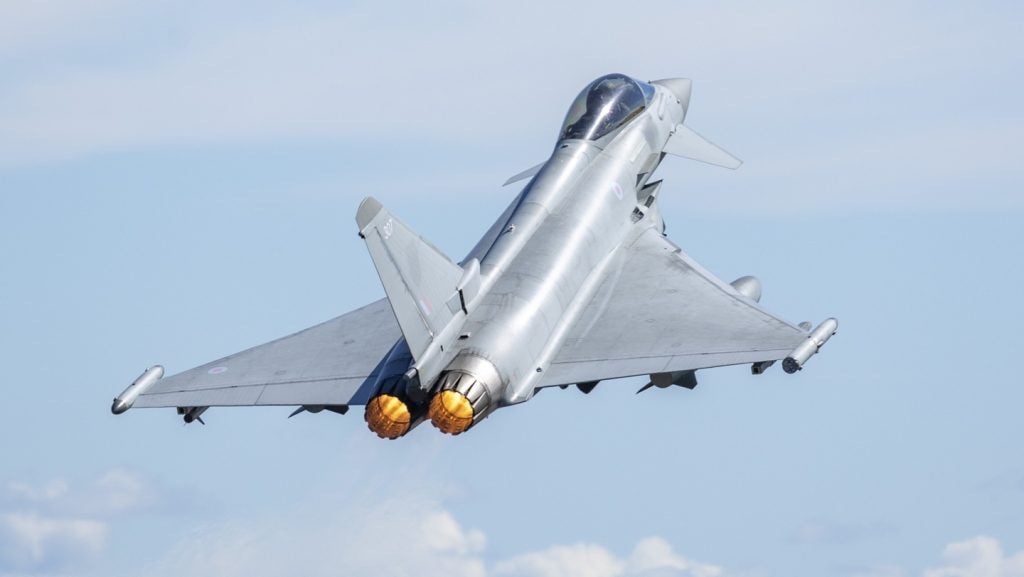The United Kingdom has successfully concluded a major training exercise in Estonia involving RAF Typhoon fighter jets and Army Air Corps Apache helicopters.
The joint exercise, Spring Tempest, showcased the UK's ability to deliver precision strikes at sea while operating deep within enemy territory.
According to GlobalData's "UK Defence Market 2022-2027" report, British troops and its NATO allies are conducting training missions in Eastern Europe to ensure maximum readiness.
RAF Typhoon fighter jets and Army Air Corps Apache helicopters have concluded a training exercise off the coast of Estonia as part of a significant multi-domain training activity involving more than 10,000 personnel from 11 NATO countries.
Equipped with Hellfire missiles, CRV7 rockets, and 30mm rounds, the Apache attack helicopters from the Army Air Corps Aviation Taskforce joined forces with the Typhoon jets from 140 Expeditionary Air Wing.
The Typhoon jets were armed with Paveway IV laser-guided bombs and 27mm armour-piercing rounds. Both aircraft engaged in live firing exercises during the exercise, targeting simulated sea-based threats.
Wing Commander Scott MacColl, 140 Expeditionary Air Wing's Commanding Officer, said: "Exercise Spring Tempest has been an outstanding opportunity to integrate effects across the Land, Maritime and Air domains. Working with the Royal Navy and Army has allowed us to exercise high-end skill sets while enhancing interoperability across a broad range of NATO allies."
The training mission was supported by a Forward Air Controller operating from a Wildcat helicopter nearby. Both helicopters coordinated with ground-based personnel to refuel, rearm, and return to the mission area.
This year marked the first brigade-level deployment to Estonia, involving a significant increase in deployed personnel from the UK.
Previously, Exercise Spring Storm showcased UK soldiers deployed under the Army's Operation CABRIT, engaging in land-based training exercises. These exercises encompassed live firing scenarios, trench assaults, reconnaissance missions, vehicle manoeuvres, and combined arms warfare.
The Royal Navy's amphibious assault ship, HMS Albion, played a role in the training exercises by facilitating the integration of the RAF, Army, and Royal Marines. HMS Albion accommodated approximately 550 sailors and Royal Marines, and its crew supported training exercises, including a dawn beach raid exercise involving marines from 45 Commando.
Additionally, HMS Albion participated in a fully-integrated training exercise off the coast of Paldiski, where Typhoon jets, Apache, and Wildcat helicopters demonstrated their synchronized capabilities.









